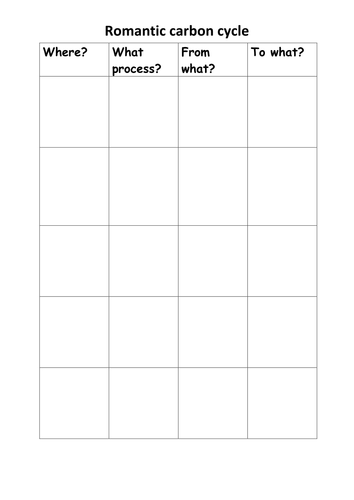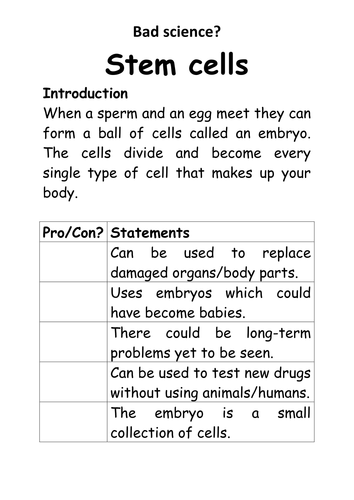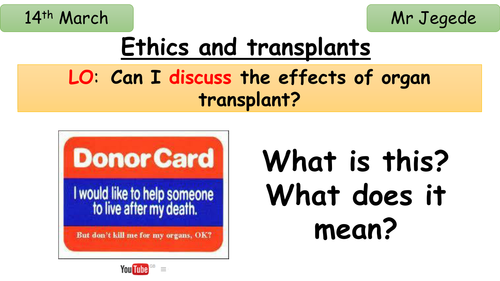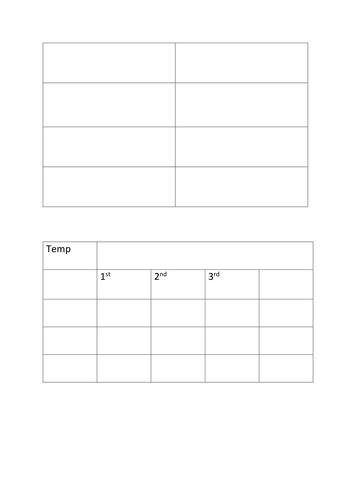243Uploads
111k+Views
55k+Downloads
All resources

B15.9 Classification
AQA GCSE Sciences (9-1)
Biology: B15 Genetics and evolution
Lesson 9: B15.9 Classification
Based on the Kerboodle Resources
The AQA Kerboodle worksheet are not included so as to be acting within the TES code of conduct.
Keywords: Classification, Species, Archaea, Domains

B15.5 Evidence for evolution
AQA GCSE Sciences (9-1)
Biology: B15 Genetics and evolution
Lesson 5: B15.5 Evidence for evolution
Based on the Kerboodle Resources
The AQA Kerboodle worksheet are not included so as to be acting within the TES code of conduct.
Keywords: Extinct, Biodiversity, Endangered, Gene banks

P1.2 Conservation of energy
AQA GCSE Sciences (9-1)
Physics: P1 Conservation and dissipation of energy
Lesson 2: P1.2 Conservation of energy
Based on the Kerboodle Resources
The AQA Kerboodle worksheet are not included so as to be acting within the TES code of conduct.

B8.1 Photosynthesis
AQA GCSE Sciences (9-1)
Biology: B8 Photosynthesis
Lesson 1: B8.1 Photosynthesis
Based on the Kerboodle Resources
The AQA Kerboodle worksheet are not included so as to be acting within the TES code of conduct.
Keywords: Glucose, Endothermic reaction, Photosynthesis

P2.1 Energy transfer by conduction
AQA GCSE Sciences (9-1)
Physics: P2 Energy transfer by heating
Lesson 1: P2.1 Energy transfer by conduction
Based on the Kerboodle Resources
The AQA Kerboodle worksheet are not included so as to be acting within the TES code of conduct.

Atomic Theory
In this lesson, learners will learn about the billiard ball model, plum pudding model, nuclear model and Bohr model of the atom.
They will also learn the contribution of James Chadwick and how to distinguish the different sub-atomic particles.

Rutherford & The Nuclear Model
In this lesson, learners discover how Rutherford and his students deduced the nuclear model from the alpha scattering experiement.

C6.4 Electrolysis of aqueous solutions
AQA GCSE Sciences (9-1)
Chemistry: C6 Electrolysis
Lesson 4: C6.4 Electrolysis of aqueous solutions
Based on the Kerboodle Resources
The AQA Kerboodle worksheet are not included so as to be acting within the TES code of conduct.

Ethics and organ transplant
Pupils discuss why some people need transplants. Also you ma want to link in why people travel to different countries to get a transplant.

Recording Data (Introduction lesson 4/4) "Graphs and Tables"
Designed to be the fourth lessons for Year 7s (4/4).
Learning outcomes:
(*) Describe the three different types of data.
(*) Calculate means.
(*) Draw a suitable graph for given measurements.
Students recap the three types of variables and then learn the three types of data (Continuous, Discrete and Categoric).
They are then shown how to fill in a results table (where the dependent and independent variables go).
They learn how to calculate means and how to plot this data onto a graph.
The steps in drawing a graph are laid out in a step by step method (designed to be down together with the whole class).
They are also informed on when to use line or bar charts.

Main life stages
BTEC Tech Award Health and Social Care Component 1
Learning aim A: Understand human growth and development across life stages and the factors that affect it
Learning aim A1: Human growth and development across life stages
Lesson 1: Main life stages
[Component 1, A1, Main life stages]













